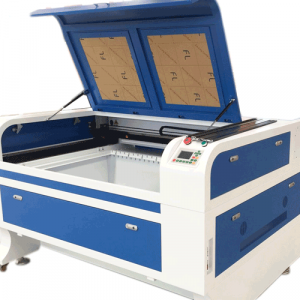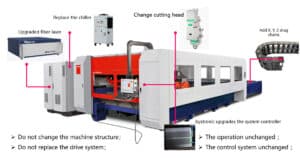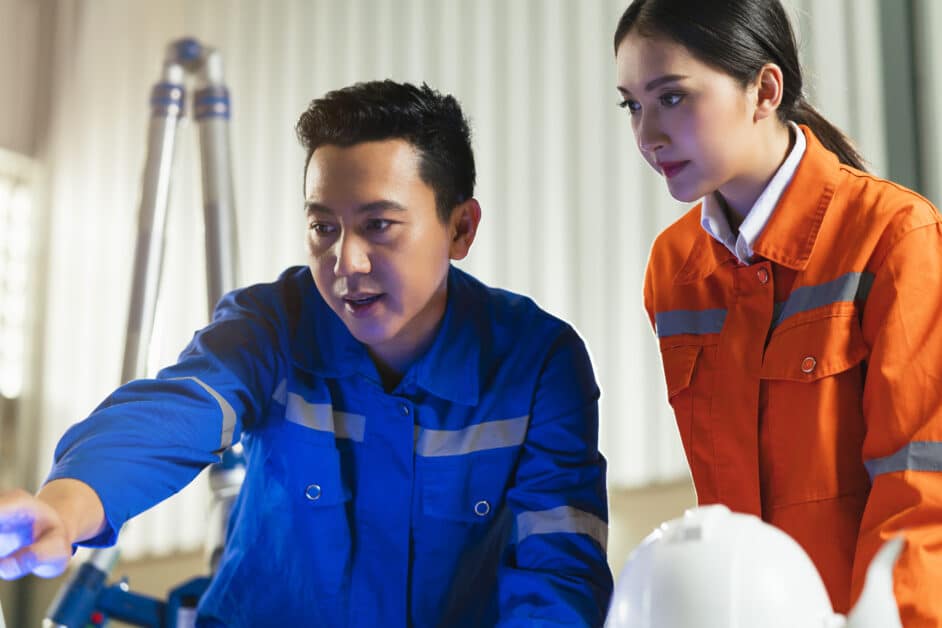Brief introduction of CO2 Gas Laser Source
CO2 is a molecular gas laser, which consists of carbon and oxygen (the most common.
Molecular gas lasers generate excited oscillations through transitions between molecular energy levels.
The invention relates to a laser that realizes high efficiency and high power output.
CO2 molecular gas laser.
The main substance is CO2, and the auxiliary gases are nitrogen, helium, and so on.
Its photoelectric conversion.
The efficiency (the ratio of output laser power to output electric power) is relatively high, generally 15%.
On the right, the output power is from the smaller watt class to large -watt class.
Because the structure types of CO2 are very different.
It is widely used in different fields, among which laser medicine is the most widely used.
The output wavelength of a CO2 laser is 10.6um, which is invisible infrared light, and it is very easy.
How To Work?
The discharge tube of the CO2 laser is filled with mixed gases such as CO2, N2, He and so on.
The ratio and total air pressure can be varied within a certain range (the general ratio is CO2:N2: He =1:0.5:2.5 The total pressure is 1066 Pa).
The CO2 laser combines the above-mentioned. The gas mixture is placed in an optical oscillator, using the vibrational and rotational energy levels of CO2 molecules.
The laser is generated by the transition, and the laser wavelength is 10.6um.
Using gas discharge pump. The energy is injected into the CO2 gas molecules by the pump method, and the CO2 molecules in the discharge tube are reversed.
Transfer distribution state: connect the two output terminals of the DC voltage to the two electrodes of the discharge tube respectively. When the voltage is not applied or the voltage is very low, the gas between the two electrodes is completely insulated, and the internal resistance. It is infinity and there is no current flowing through it; as the voltage increases, the gas begins to be charged. When the particles move, the internal resistance of the gas begins to decrease, when the voltage reaches a certain voltage peak.
The internal resistance decreases sharply, the current increases rapidly, and the gas is broken down, which is called ignition voltage.
After the gas in the discharge tube is broken down and discharged, the current increases, and the carriers in the gas increase.
The internal resistance of the laser discharge tube decreases, which in turn leads to the increase of the current, so that the internal resistance of the laser discharge tube decreases.
After the repeated process, the discharge tube shows a negative resistance effect, in order to stabilize the discharge.
Work on a certain value of the current-voltage characteristic curve of the discharge tube.
Current limiting measures are taken in the power supply circuit.
When the discharge tube discharges, in the mixed gas. N2 molecules collide with electrons and are excited by the electron energy obtained, while N2 molecules are excited by the collision between N2 molecules and electrons. When the CO2 molecule collides, it transfers the energy obtained from the electron to the CO2 molecule. After many times of energy conversion, the CO2 molecule is activated, which is more conducive to the generation of the laser. The H2 gas in the gas has a cooling effect, which can effectively prevent the temperature rise of the CO2 gas. At the same time, the lower energy level of the laser can be reduced and the output efficiency of the laser can be improved.
How to Check the Malfunctions?
The output power of the CO2 laser is low
Due to the high temperature of CO2 working gas, which slows down the process of the lower energy pole, reduces the number of particle inversion, and decreases the output power.
With the increase of the wall temperature of the discharge tube, the stress will be produced between the glass tubes, which will easily cause the glass tube to burst and cause the laser tube to be damaged.
The outlet of the laser tube must be upward, and the whole pipe must be tilted toward one end of the outlet pipe so that the cooling water can fill the whole water-cooled interlayer.
When the water fills the interlayer, no more bubbles enter, no matter how inclined the laser tube is, the cooling water will fill the interlayer; if the cooling water is interrupted, the laser tube will also be damaged.
The working power supply is larger than the optimal power supply IP, and the output power decreases, which will seriously affect the service life of the laser tube.
The consumption rates of CO2 and N2 in glow discharge plasma, CO2 is dissociated by high energy electron collision.
CO2→ 2CO+O2 if the electrode material continues to adsorb CO or O2, the CO2 will continue to decrease and the output power will decrease.
If N2 is adsorbed at the same time, the output power decreases.
If you work in a long-term and large adjustment range, the laser output power will also be reduced by 10% ~ 20%, and the working life will be shortened. Do not use the cooling water for a long time. It is recommended to change the cooling water once every 1-2 months, preferably using distilled water.
No laser output
No laser come out the lase tube is a high-frequency fault of CO2 laser in use, so the fault analysis and inspection should be carried out from the following aspects.
Check the high voltage power supply circuit.
Because the DC high voltage power supply of the machine is as high as 24kv.
Use the switch knob, indicator light and corresponding voltmeter on the panel to analyze and judge the fault; measure whether the high voltage power supply circuit is open when the power is off; confirm whether the high voltage transformer itself is normal; measure and check the thyristor and its trigger circuit which is responsible for adjusting the output voltage; in the case of power on, use the high voltage meter with a measuring range greater than 30kV to measure the output voltage value of the DC high voltage circuit.
Check the optical path to carefully observe whether the central axis of the light guide arm holder coincides with the central axis of the CO2 laser tube (should coincide), whether the fixed clasp of the CO2 laser tube is loose, whether the position of the flat-convex mirror on the output side of the laser tube is normal, and whether the output window is clean.







